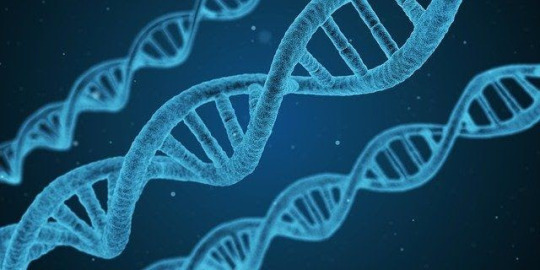#ayurvedictreatmentforcrohn’s disease
Explore tagged Tumblr posts
Text
Ayurveda And Epigenetics
Ayurveda is the oldest, most comprehensive, and natural health care system that originated in India in Vedic times. It is the “science of life” and was used as the main language in communication and teaching in ancient Vedic times. It studies the human body in depth which leads to knowledge about human behavior, physical characteristics, emotional balances, genetic material, composition, and the person as a whole.
DNA is the entity whose presence distinguishes between living and nonliving things. Further, the differences between the living things are observed due to differences in the order of the bases which are, adenine, thymine, guanine, and cytosine, present in DNA. The combination of DNA makes up genes. The human body is estimated to have 2000 genes and only 2% of these genes express themselves and are known as genotypes. The part of genetic material that determines a specific characteristic of an individual is known as a genotype. The part of genetic material that refers to the physical property of an individual, which includes appearance, development, and behavior is known as phenotype.
Epigenetics refers to the external modification of DNA that turns genes on and off, affecting gene expression, that is, by changing the phenotype of the genes and not genotype. This modification takes place without a change in the DNA sequence. This modification in genetic expression leads to transgenerational effects. The major factors that may cause epigenetic changes are lifestyle, behavior, diet, stress, digestion, and other environmental factors. Thus these factors affect the Prakriti of an individual, which refers to phenotype, and indirectly the Janma (birth) Prakriti, which corresponds to genotype. Thus epigenetics become an important mechanism of Ayurveda in understanding the Prakriti of an individual.
DNA methylation, histone modification, chromatin remodeling, and microRNA are the mechanisms that are involved in the modification of DNA expression.
1.In the DNA methylation process, methyl groups are attached to DNA molecules. Due to this the activity e of the DNA changes.
2.The proteins that are wrapped around DNA in the nucleus forming chromatin, are known as histones. In this process, DNA is condensed into a more compact form to protect DNA structure and sequence. This condensation is possible because chromatin can condense or relax, thereby changing the expression of DNA. This condensation and relaxation process of chromatin is supported by histone and affects DNA expression.
3.The rearrangement of chromatin from condensed state to a transcriptionally accessible state, is known as chromatin remodeling. This allows transcription factors to access DNA and control gene expression.
4.The non-coding RNA molecules that stop the functioning of mRNA are referred to as microRNA.
Over 90% of life is controlled by epigenetics which are changes in gene expression. These are brought by what one does in one’s life. Whatever an individual does in its life, it changes the ayurvedic deha prakriti (psychological constitution), which is relayed back to DNA, and changes the expression accordingly. Thus, the process of epigenetics refers to Karma (action) at the cellular level. It can also be referred to Newton’s third law- ” every action has an equal and opposite reaction”.
The four main factors that affect an individual’s life are the same as those mentioned in Ayurveda for maintenance of healthy life and prevention of disease.
1.Lifestyle and behavior
2.Diet and digestion
3.Stress
4.Environmental factors.
If all the actions performed by an individual are in a positive direction, Deha Prakriti is balanced and health is maintained. But if the actions performed by an individual are in a negative direction, Deha Prakriti becomes imbalanced, leading to Vikriti, and disease is manifested. This entire process is brought in by the mechanism of epigenetics.
The healthcare system in Ayurveda lays down a comprehensive text that relates to all the above factors which affect epigenetics.
1.Dinacharya: It recommends the optimal time for waking up, eating, exercising, meditating, and having lunch; in order to stay in sync with the rhythm of the external environment, and supports optimal health.
2.Ratricharya: It requires what to eat for dinner at the optimal time to go to bed in order to get good sleep.
3.Ritucharya: Its recommendations include what all stuff can be consumed in which season. For example, having cool foods during summer to maintain body temperature and minimize hot and spicy food.
Other health-promoting systems in Ayurveda are:
1.Aahara Vihara – diet and guidelines for eating.
2.Sadvritta – Social and personal behavior.
3.Manasa Tivra – Mental stress management.
4.Manas Vritti – Mental fluctuations management.
5.Paryavarana – External and home place management.
On a concluding note, the term Janma Prakriti refers to genotype and Deha Prakriti refers to phenotype. An imbalance or disorder in Deha Prakriti is known as Vikriti and corresponds to disease in the medical system. There are various factors that affect the Prakriti of an individual, and Ayurveda has a cure to it. Thus, the deep knowledge of Ayurveda promotes healthy life even at genetic level.

0 notes
Text

Attention Deficit Hyperactivity Disorder (ADHD) is a condition that often runs in families, creating a unique bond and a shared journey between parents and children. For parents who have ADHD, seeing their child exhibit similar traits can be both challenging and enlightening. This shared experience can foster a deeper understanding and empathy, but it also necessitates navigating the complexities of managing ADHD across generations.
0 notes
Text

Treatment of Eczema through Ayurveda : Decoding it's Symptoms and Providing Personalised Healthcare at #EliteAyurveda For more information visit http://bit.ly/3v9K5Y0 #EczemaRelief #SkincareSolutions #HolisticHealth #AyurvedicTreatment #HealthySkin #SkinWellness #EczemaAwareness #eczemawarrior #eczemarelief #itchingskindiseases
0 notes
